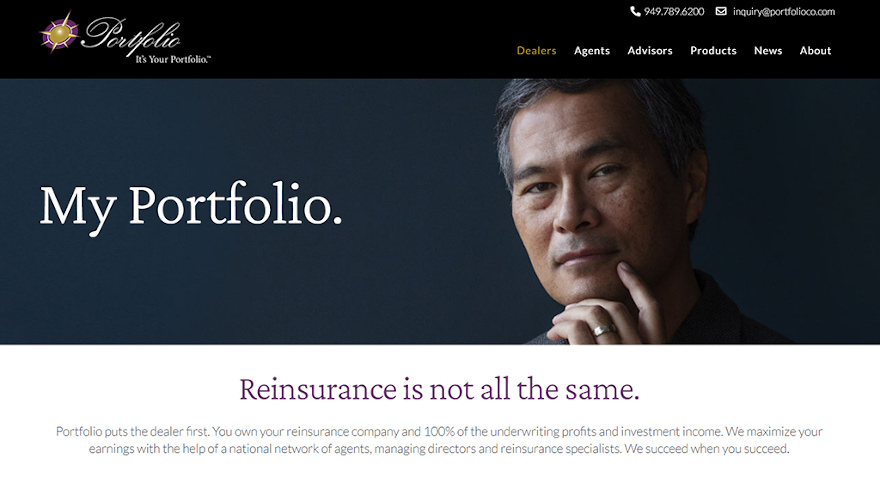Delinquency rates on auto financing declined during the first quarter, according to Experian’s latest State of the Automotive Finance Market Report.
But Experian experts acknowledged the metrics might be ripe for change as the automotive industry grapples with the impact of COVID-19 and financial hardship felt by consumers.
What might be most noteworthy for finance companies that specialize in subprime paper is this tidbit. Experian reported on Tuesday that subprime financing made up 22.52% of total auto financing, which is a historic low for the first quarter of the year.
Meanwhile, Experian determined 30-day delinquencies decreased from 1.98% in Q1 of last year to 1.93% in Q1 of this year, while 60-day delinquencies dropped from 0.68% to 0.67% during the same time frame.
“The decrease in delinquency rates is a positive sign for the industry, though it’s important to recognize other factors may have attributed to the trend,” said Melinda Zabritski, Experian’s senior director of automotive financial solutions.
“For example, COVID-19 wasn’t declared a national emergency until mid-March,” Zabritski continued in a news release. “Add to that, some consumers are likely leveraging financial resources and assistance programs, such as stimulus checks, to manage through financial hardship, so its true impact may not be evident until the months ahead.”
To better assess COVID-19’s early impact on the industry, Experian also analyzed finance trends during the month of April. This data showed new-vehicle title changes dropped 50.8% compared to the previous year, while used-vehicle title changes dropped 54% over the same time period.
Analysts pointed out that additional findings showed a decrease in leasing year-over-year, with 24% of new vehicles being leased in April of this year, compared to 30% in April of last year.
Experian also mentioned affordability was a point of industry conversation prior COVID-19 and will likely remain so as consumers navigate their current financial situations over the coming months.
Analysts determined the average amounts financed continued to increase in Q1, with the average new-vehicle contract amount reaching $33,739 and the average used-vehicle contract amount clocking in at $20,723.
Experian indicated these increases reflected in average monthly payments as well, as the average new-vehicle payment increased from $554 in Q1 of last year to $569 in Q1 of this year. The report also showed average used-vehicle payments ticked up by $8 year-over-year, from $391 to $397.
Experian went on to note that as vehicle financing amounts continue to grow and consumers look for the most affordable options, the trend of prime consumers opting to finance used vehicles continued.
In fact, analysts discovered prime consumers comprised 50.47% of used-vehicle financing in Q1.
According to the report, used-vehicle financing is most common in Mississippi, making up 78.45% of vehicle contracts in the state. Rounding out the top five states for used-vehicle contracts are Indiana (77.89%), Tennessee (77.78%), Michigan (77.51%) and Minnesota (77.24%).
“As consumers continue to navigate the financial impact of COVID-19, they may consider all options available to them,” Zabritski said. “Understanding data points like where used vehicle loans are most prominent can help lenders and dealers make informed decisions as consumers begin to re-enter the market.”
Additional findings for Q1 include:
• The average credit score for new-vehicle contracts was 721, while the average credit score for used-vehicle financing was 660.
• The Honda Civic was the most commonly leased vehicle, making up 3.5% of lease market share.
• Average terms saw a slight uptick: average new vehicle terms were 69.17 months in Q1 compared to 68.85 months in Q1 of last year while average used terms increased to 64.83 months from 64.67 months in the same time frame.
• Interest rates saw decreases in Q1, as the average new-vehicle rate was 5.61% and average used-vehicle rate was 9.65%.
To view the entire Q1 2020 State of the Automotive Finance Market Report via a webinar, go to this website.
Preferred Warranties Inc. (PWI) is looking to give dealers more tools as they resume used-vehicle sales in the face of a COVID-19 retail slowdown.
The KAR Global business unit on Wednesday announced comprehensive enhancements and savings on protection plan offerings.
“Many dealers are feeling the pain as COVID-19 takes its toll on the auto remarketing industry,” PWI president Edmund Field said. “To better support our dealers, we’re adapting our offerings to deliver extra value to them and their retail customers, providing more at lower price points to accommodate tighter budgets.”
PWI highlighted that program enhancements include extended terms and mileage bands to the popular Premier Plan, representing a lower cost to retail customers.
Furthermore, the company is reclassifying eligibility requirements of many makes and models, generating cost savings by decreasing class qualifications in some cases, and adding plan qualifications on vehicles never before accepted.
“Retail demand is still recovering, so standing out from the competition will be key to ramping up sales,” PWI vice president of sales Allison Marley said. “PWI’s program enhancements will help dealerships distinguish their offerings from others while bringing retail customers confidence about their purchasing decision.”
To provide dealers with further relief, PWI went on to mention that it is launching a promotion offering discounts on some of PWI’s most popular products.
Through July 31, eligible dealers can save between 10% and 15% on Base, Powertrain and Plus extended service contracts. To view additional promotional details, including terms and conditions, visit https://www.preferredwarranties.com/.
“PWI’s enhancements were designed to support our dealers with exactly what they need to jumpstart their sales and deliver extra revenue in the F&I space,” Field said. “Providing innovative solutions and the best customer experience in the industry is our primary focus—and through these relief offerings, we’re empowering our dealers to pay it forward to their customers.”
Established in 1992, PWI administers extended service contracts to more than 3,000 independent dealers. With a full menu of service contracts and extensive coverage levels, PWI insisted its products drive high levels of confidence, value and revenue for its authorized dealers.
To supplement product offerings, PWI provides service and training to assist dealers with selling these products, which in turn can create value and enhanced satisfaction for their customers.
Edmunds discovered interest rates for new vehicles financed in May dropped to the lowest level seen by the industry in nearly seven years.
Meanwhile, Edmunds indicated that rates for used-vehicle financing remain nearly steady compared to both this time last year as well as five years ago.
Edmunds reported on Tuesday that the annual percentage rate (APR) on new financed vehicles averaged 4% in May, compared to 4.3% in April and 6.1% a year ago. Analysts said this reading is the lowest average interest rate since August 2013 and the third-lowest Edmunds has on record dating back to 2002.
On the used-vehicle side, Edmunds determined that ARP came in at 8.3% in May, slightly lower than the year-ago reading (8.7%) and a bit above what analysts spotted back in May 2015 (7.6%).
Edmunds analysts also mentioned that zero-percent finance offers for new models dipped slightly in May compared to April, but still remained at near-record levels. The firm said these deals constituted 24% of all new financed purchases, compared to 25.8% last month.
Furthermore, Edmunds data also revealed that 47% of all financed purchases received an APR below 3% in May, compared to 41.5% in April.
“Consumers who purchased a car in May got to take advantage of some of the best deals we’ve ever seen, thanks to a combination of Memorial Day weekend sales and generous incentives offered by automakers to spur demand during the pandemic,” Edmunds executive director of insights Jessica Caldwell said in a news release. “Even with 0% finance deals down slightly, more car shoppers got better financing rates than usual.”
Edmunds went on to note that contract term lengths sustained near-record highs in May. The average term length for a new vehicle was 71.4 months, which is the second-highest Edmunds has on record, compared to last month’s average of 73.4 months.
“Car shoppers are showing that they’re comfortable committing to longer loans to get the vehicles that they want right now, especially with the ongoing availability of 0% deals,” Caldwell said. “But these incentives aren’t going to last forever. It’s going to get tougher for car shoppers to find good deals as inventory declines over the new few months.”
Likely sparking the stretching of those new-vehicle terms is the cost of those models.
ALG, a subsidiary of TrueCar, projected average transaction prices (ATP) in May to be up 4.6% or $1,607 from a year ago but down 1.7% or $639 from April.
“Every brand, with the exception of Kia, has increased their average transaction price year-over-year in May mainly attributed to ongoing 0% interest rates. Kia is down likely due to lower inventory levels on their popular Telluride model, which carries one of the highest MSRPs in their lineup,” ALG chief industry analyst Eric Lyman said in a news release.
“It’s important to note that while average transaction prices have increased year-over-year, they are down month-over-month,” Lyman continued. “We can expect a trend of lower inventory on popular models across automakers as production stoppages and higher than expected demand are taking shape based on geography. As a result, we expect automakers to continue to not only pull back, but also shift their incentive strategies from nationally based to regionally and locally based in order to offset those supply shortages.
“We expect the highly incentivized and in-demand SUVs and trucks to be affected more than other segments,” he added.
And finally, the valuation analysts at Kelley Blue Book reported the estimated average transaction price for a light vehicle in the United States came in at $38,940 in May. KBB computed new-vehicle prices increased $1,618 (up 4.3%) year-over-year, while prices dropped $244 (down 0.6%) from last month.
“Though new-car sales will be down significantly for the third month in a row, due to the COVID-19 pandemic, average transaction prices have actually strengthened over this period for several reasons,” Kelley Blue Book analyst Tim Fleming said in a news release. “Incentives, deferred payments, and low APR deals are helping consumers stretch out their monthly payments over longer terms.
“Inventory levels have tightened as the economic recovery has begun, but little new supply has arrived yet from the factories that restarted in May,” Fleming continued. “Finally, the share of pickup trucks has spiked recently, reaching an all-time high in April.”
KBB reiterated these factors all contributed to the 4% increase in transaction prices in. However, KBB predicted gains at these levels are not sustainable.
“If factories are slow to restart and new-vehicle inventories remain low, manufacturers will pare back their incentives, placing pressure on new-vehicle prices,” KBB said. “While trucks have been remarkably resilient, their big spike in market share was the result of sales losses in mid-size cars, compact SUVs and minivans.
“When the market sees sales of these family haulers return will depend on the shape of the economic recovery, but in the meantime, truck manufacturers are likely pushing to get capacity back up quickly to restock their inventories,” KBB went on to say.
New-Car Finance Data (Averages)
|
|
May 2020
|
May 2019
|
May 2015
|
|
Term
|
71.4
|
69.6
|
67.9
|
|
Monthly Payment
|
$570
|
$559
|
$490
|
|
Amount Financed
|
$36,059
|
$32,510
|
$28,908
|
|
APR
|
4.0%
|
6.1%
|
4.6%
|
|
Down Payment
|
$3,925
|
$4,235
|
$3,346
|
Used-Car Finance Data (Averages)
|
|
May 2020
|
May 2019
|
May 2015
|
|
Term
|
67.9
|
67.3
|
66.1
|
|
Monthly Payment
|
$412
|
$412
|
$381
|
|
Amount Financed
|
$22,721
|
$22,191
|
$20,782
|
|
APR
|
8.3%
|
8.7%
|
7.6%
|
|
Down Payment
|
$2,947
|
$2,719
|
$2,331
|
Source: Edmunds
Portfolio is looking to make the reinsurance process easier for auto, RV and powersports dealers and independent agents.
The dealer participation program provider recently announced the launch of a new website at PortfolioReinsurance.com. Portfolio explained the site was designed to offer a streamlined, user-friendly experience.
Among the highlights is a series of quick-reference homepage buttons. Each one offers dealers more details about one aspect of Portfolio’s award-winning reinsurance program, including ownership, dividends, loans and income development.
The feature also appears on the site’s agents page, where agents can click to learn about Portfolio’s program, F&I products, agency support and more.
“Our goal was to create a more intuitive, interactive, mobile-friendly website,” Portfolio chief sales officer Dan Haugen said. “You can get the overview quickly, and if you need to know more about reinsurance or how Portfolio’s program works, you can instantly access this other, more detailed layer.”
In an increasingly digitized industry, Haugen added, dealers and agents — like all consumers — want accurate, actionable information delivered on demand.
“It’s critical,” he said. “You can’t just tell your story. You have to be a resource.”
The new website is live now at PortfolioReinsurance.com.
Westlake Financial continues to find ways to grow its overall portfolio.
This week, Westlake rolled out a new commercial vehicle financing program, which will be available in eight markets and will expand nationwide throughout the year.
The move comes after Westlake absorbed the accounts of three finance companies that have departed the business in the past year.
According to a news release, Westlake’s commercial vehicle program can allow dealerships to offer financing of up to $65,000 for vehicles ranging from cargo vans to big rigs. Terms can vary from 36 to 72 months, depending on the vehicle mileage, with minimal stipulation requirements.
The company indicated this new program is available in the following states:
— Georgia
— Kansas
— Maryland
— Maine
— Mississippi
— New Jersey
— Ohio
— Virginia
“We are always looking for new avenues to help dealers finance more customers,” said Pamella Teixeira, manager of business strategy and analytics at Westlake Financial. “Our commercial vehicle program fulfills the request we had received from many auto dealers across the country.”
The company went on to mention active Westlake Financial dealers are able to submit commercial vehicle applications from DealerCenter, Dealertrack, RouteOne or CUDL for approval.
Dealers looking for more information on Westlake’s commercial vehicle program can visit www.westlakefinancial.com/commercial-vehicles.
AUL Corp. recently launched an upgrade to its portfolio of services — an augmented quote and sales portal for agents, dealers and finance companies.
AUL chief information officer and chief operating officer Jose Fleites explained the new portal can deliver an easy to use navigation and the ability to rate and generate multiple products at the same time, including GAP. Fleites emphasized this vital upgrade is part of the full-service F&I provider’s greater integration of technology to improve processing efficiencies, allowing for additional time to focus on expanding customer relations and support.
Fleites went on to mention the release of the new ADL Portal will be followed later this year with on-demand reporting, updated profile features, enhanced notification processes, a no VIN required quote experience, and a more seamless remittance process.
All of these tools followed last year’s introduction of Ocean, the company’s new state-of-the-art operating system that positions AUL as a one-partner, total solution F&I product provider to agents, dealers, and finance companies across the United States.
“Now more than ever, as an F&I leader, it is our job to empower AUL partners with state-of-the-art tools that make their job as easy, efficient, and ultimately – as profitable as possible. Our new portal provides a seamless and secure, always-on tool for our agents, dealers, and lenders, providing real-time quotes and streamlined sales,” Fleites said in a news release.
“Feedback from our dealers has guided the development of these tools and led to our goal of automating roughly 30% of what we do so our people can focus on what they do best — treat our policyholders like family,” he went on to say.
To find out more information, visit www.aulcorp.com.
Your potential customer has what could be a great trade; a vehicle that will stand tall on the front line and probably turn quickly.
But then that vehicle is involved in an accident.
To help all parties involved, Dealer Owned Warranty Co. (DOWC) this week introduced Value Protect, an option in a retail installment contract to preserve the trade-in value of a vehicle should it be involved in an accident.
“With many of today’s vehicles becoming increasingly expensive, consumers were simply losing too much money at trade-in if there was an accident requiring repairs to the vehicle,” stated, of DOWC founder Michael LaMotta said in a news release. “Value Protect helps drivers recapture some of that diminished value that insurance companies don’t cover.”
The provider and administrator of F&I products and services acknowledged many owners are shocked to learn that vehicles involved in an accident can be worth up to 30% less at trade-in time.
“Even if the vehicle was properly repaired and the driver was not at fault for the accident, the potential loss in value is real and can be quite significant,” DOWC said.
Value Protect can protect consumers from an additional dent to their wallet at trade-in, following an accident. For example, the company explained that if the trade-in value of a vehicle before an accident is $20,000, it may only be $14,000 following an accident, even if the vehicle is fully repaired.
Value Protect could preserve the original trade-in value by reimbursing up to $6,000, depending on the accident repair amount.
“We think drivers who take care of their vehicles deserve to get the most money possible at trade-in,” LaMotta said.
The Value Protect Option Contract is just one of the customizable products available to DOWC partner dealers and their customers.
For more information about DOWC, visit dowc.com, call (201) 777-1000 or email [email protected].
Experienced dealership managers and finance company executives might remember a juncture when subprime permeated much of used-vehicle financing. People with softer credit profiles opted for less-expensive used vehicles with a contract they could manage and risk that the provider deemed to be prudent.
Times, they are changing.
Experian’s newest State of the Automotive Finance Market Report indicated prime consumers opting for used financing during the fourth quarter surpassed 50% — the highest percentage in Q4 since 2009.
Furthermore, analysts discovered used-vehicle financing saw the largest growth year-over-year among super-prime consumers, rising from 12.55% in Q4 2018 to 13.29% in Q4 2019.
“The trend towards used vehicle financing mirrors previous quarters,” Experian said in a news release.
Meanwhile, subprime and deep subprime contracts constituted 27% of used-vehicle financing in Q4, according to Experian, which added that subprime paper made up 21.69% of total financing in Q4 2019, a slight decrease from Q4 2018 (21.88%).
Experian’s research uncovered that prime consumers leverage used financing for a variety of vehicle types, with full-size pickups and entry-level crossover utility vehicles (CUVs) being the most popular, though their selections also include small economy and mid-size vehicles.
Analysts determined full-size pickups made up 15.09% of used financing in Q4 2019, while entry-level CUVs weren’t far behind at 15.07 percent of used financing.
“We’ve seen consumer preferences shift to more expensive vehicles over the last few years. During the same time period, consumers have been increasingly aware of their financial health, and the increase in used financing is a signal they’re keeping this in mind when shopping for a vehicle,” said Melinda Zabritski, Experian’s senior director of automotive financial solutions.
“As consumers look at the options available, selecting a used vehicle can be the best fit for their budgets, while not compromising the features they’re looking for,” Zabritski continued.
Experian pointed out that used financing isn’t the only segment seeing prime growth.
New financing increased, as well, as analysts noted prime consumers comprised more than 72% of new-vehicle financing in Q4 2019. As more financing goes prime, Experian indicated there’s also been a steady increase in average credit scores, with the average credit scores for vehicle financing reaching 719 for new contracts and 661 for used deals in Q4 2019.
Positive trends in delinquency and payments
Overall, Experian computed that the auto-finance market continues to grow with total open automotive balances reaching $1.229 trillion.
Analysts noted the average amount financed for a vehicle purchase increased in Q4 2019. Experian pegged the average new-vehicle contract amount at $32,797 during the quarter, while the average used-vehicle deal reached $20,554.
Despite increases in average amounts financed, Experian highlighted that delinquency rates stayed relatively flat in Q4 2019, with 30- and 60-day delinquencies at 2.31% and 0.79%, respectively.
Additionally, analysts said that while average monthly payments continued to increase, the increases were not as dramatic as historically seen.
In Q4 2019, the average monthly payment for a new vehicle came in at $554, a $9 year-over-year increase, and the average monthly payment for a used vehicle was $393, up $6 year-over-year. The more moderate increases in monthly payments were aided by a reduction in average interest rates, which were 5.76% for new and 9.49% for used in Q4 2019, compared to 6.13% and 9.59% during the same time a year earlier.
“The data shows numerous positive trends for affordability, including flat delinquencies and lower interest rates, which we expect to continue,” Zabritski said. “All signs point to consumers being able to manage their loans well, which is a strong indicator of stability in the industry.”
4 additional findings
Experian mentioned a quartet of other trends from its latest data, including:
— Consumers choosing to lease continued to increase, making up 29.92% of new vehicles financed, compared to 28.76 percent of new vehicles in Q4 2018.
— Banks continued to increase their market share of vehicle financing, rising from 30.72% to 32.74% year-over-year.
— Longer terms continue to dominate the market, with increases in the 61-72 and 73-84 month segments for new-vehicle contracts rising most (40.5% and 30.5%, respectively).
— The average price difference in monthly payments between retail installment contracts and vehicle leases is $93.
To view the entire Q4 2019 State of the Automotive Finance Market Report during a webinar to be hosted by Experian, register at this website.
As purchase preferences continue to skew toward SUVs and trucks, pushing average prices higher, Edmunds noticed what those buyers are being charged to finance that acquisition remained stable in February.
Edmunds reported on Tuesday the average interest rate for new-vehicle financing stayed below 6% for the eighth month in a row. The annual percentage rate (APR) on new financed vehicles averaged 5.6% in February, compared to 6.3% in 2019 and 5% five years ago.
Edmunds data revealed that the share of sales with 0% finance deals stayed flat at 3.6% in February, unchanged from January.
“Interest rates on new cars are in a really stable place right now,” Edmunds executive director of insights Jessica Caldwell said in a news release.
“February is a slower month for auto sales, so shoppers heading to the dealership at this time of year are probably not going to find much in the way of big promotional offers, but they’re definitely getting better interest rates than if they tried shopping at this time just a year ago,” Caldwell continued.
For used-vehicle financing, Edmunds indicated the average APR came in at 8.3% in February, edging slightly higher from January (8.2%) but softening from a year ago (9.0%).
The stable financing metrics should be good news for dealerships and finance companies that are continuing to work customers who are taking on more debt to finance higher-priced vehicles.
In the new-car space, TrueCar and its data and analytics subsidiary, ALG, projected February average transaction prices (ATP) to be up 2.0% or $701 from a year ago and 1.0% or $360 lower compared to January.
“Average transaction prices have increased for 51 consecutive months. This is likely due to the healthy economy and consumers opting for utility vehicles with generally higher price tags,” said Eric Lyman, chief industry analyst for ALG, a subsidiary of TrueCar.
“That being said, there are still plenty of new vehicles for consumers to choose from that are not only affordable, but also offer the latest safety and technology features. Brands such as Kia, Nissan, Hyundai and Honda all have average transaction prices below $30,000,” Lyman continued in a news release.
Nick Woolard, director of OEM and affinity partner analytics at TrueCar, explained which OEM influenced the firm’s data most in February.
“Hyundai has shown the biggest increase in average transaction price this month primarily due to sales of the Palisade, their popular three-row SUV, which has almost twice the average transaction price of other vehicles in Hyundai’s portfolio,” Woolard said. “The all-new Sonata, winner of ALG’s best vehicle redesign of 2020, is also piquing the interest of consumers looking for a Hyundai at a lower price point.”
The valuation analysts at Kelley Blue Book reported the estimated average transaction price for a light vehicle in the United States was $37,876 in February. They determined new-vehicle prices increased $975 or 2.6% from February of last year while falling $126 or 0.3% compared to the previous month.
“Many of the major manufacturers increased prices by more than 4% by capitalizing on the shift toward SUVs. However, trucks, especially full-size trucks, are exhibiting weakness,”, for Kelley Blue Book analyst Tim Fleming said in a news release.
“After prices climbed 3% in 2018 and 4% in 2019, truck prices are only flat through February 2020,” Fleming continued. “With the GM and Ram trucks in their second year of production and Ford about to sell-down the current F-150 for its upcoming redesign, this year may be a good time to find a deal on a new truck.”
What can constitute a deal for consumers is how much money OEMs slap on hoods. ALG spotted judicious incentive use in February.
Analysts indicated average automaker incentive spend in February is expected to reach $3,576, up 0.2% or $8 year-over-year but down 4.2% or $158 month-over-month.
ALG calculated that incentive spending as a percentage of ATP for the industry in February is expected to be 10.1%, down 1.8% from a year ago and down 3.3% from January.
New-Car Finance Data
|
|
February 2020
|
February 2019
|
February 2015
|
|
Term
|
69.8
|
69.4
|
67.6
|
|
Monthly Payment
|
$569
|
$556
|
$492
|
|
Amount Financed
|
$33,583
|
$32,071
|
$28,686
|
|
APR
|
5.6
|
6.3
|
5.0
|
|
Down Payment
|
$4,301
|
$4,187
|
$3,493
|
Used-Car Finance Data
|
|
February 2020
|
February 2019
|
February 2015
|
|
Term
|
67.4
|
67.4
|
65.6
|
|
Monthly Payment
|
$411
|
$409
|
$373
|
|
Amount Financed
|
$22,364
|
$21,861
|
$19,702
|
|
APR
|
8.3
|
9.0
|
9.0
|
|
Down Payment
|
$2,707
|
$2,638
|
$2,369
|
Source: Edmunds
Dealerships and finance companies now again can cater to servicemembers and their families just like any other civilian customers who finance a vehicle purchase.
According to a news release distributed on Thursday afternoon, the U.S. Department of Defense has granted a joint petition filed by the National Automobile Dealers Association (NADA) and the American Financial Services Association (AFSA) to withdraw Question and Answer (Q&A) 2 from a December 2017 Interpretive Rule that sought to define the scope of the vehicle financing exclusion to the Military Lending Act (MLA).
The development also came as welcomed news to the National Independent Automobile Dealers Association (NIADA).
The associations explained that Q&A 2 interpreted the MLA in a way that effectively prevented dealers from making Guaranteed Asset Protection (GAP) Waiver coverage available to servicemembers, who previously were able to voluntarily purchase GAP waiver to protect against the personal financial risk that arises when a vehicle is declared a total loss.
As a result, the associations pointed out the Defense Department’s issuance of Q&A 2 “unnecessarily” exposed servicemembers to significant liability by effectively eliminating their ability to adequately protect themselves from incurring financial losses in the event of the total loss of a vehicle.
In January 2018, NADA and AFSA jointly petitioned the Defense Department to withdraw Q&A 2. During the next 25 months, NADA and AFSA worked to demonstrate to the Defense Department that this interpretation created a trio of consequences, including
— Impermissibly narrowed the scope of the motor vehicle financing exclusion that Congress created when it enacted the MLA
— Was issued in an uninformed and procedurally-deficient manner
— Was harming service members and undermining military readiness
NADA and AFSA recapped that they also explained that attempting to comply with the MLA as it relates to credit-related products was not economically feasible because one of the restrictions that applies to non-depository institutions like dealers was their inability to take a security interest in the vehicle collateral.
In explaining its decision to withdraw Q&A 2, the Defense Department stated that it “finds merit in (the security interest) concern and agrees additional analysis is warranted.”
NADA president and chief executive officer Peter Welch and AFSA president and chief executive Bill Himpler issued ajoint statement in response to Defense Department’s action.
“This is a great victory for military service members and their families. It is critically important for members of the military to have the ability to purchase valuable credit-related products such as optional GAP waiver protection when they finance the purchase of a new vehicle,” Welch and Himpler said.
Hudson Cook chairman Michael Benoit elaborated about Thursday’s development.
“Because the effect of the DOD withdrawal is a recognition that auto financing contracts that include credit-related products like GAP waiver are within the scope of the motor vehicle financing exclusion, I expect that auto-finance companies will again feel comfortable purchasing contracts from dealers that include GAP waiver,” Benoit said.
“Because the effect of the DOD withdrawal is a recognition that auto financing contracts that include credit-related products like GAP waiver are within the scope of the motor vehicle financing exclusion, I expect that auto finance companies will again feel comfortable purchasing contracts from dealers that include GAP waiver,” Benoit said.
The National Independent Automobile Dealers Association applauded the Defense Department’s decision, too.
“The removal of this rule is a huge win for the military community and the auto dealers who serve their transportation and automotive finance needs,” NIADA chief executive officer Steve Jordan said in a separate statement. “Further, NIADA is thrilled that revoking Q&A No. 2 signals a continued interest in disavowing inherited bad policy in favor of reasonability and fair thought by the agencies that have operational oversight of the automotive industry.
“It’s a great day when common sense prevails for the driving public, especially those serving our nation in the military,” Jordan added.
In its interpretive rule withdrawing Q&A No. 2, NIADA pointed out the Defense Department said it “finds merit” in creditors’ concerns that they would be “unable to technically comply with the MLA” on such purchases because “the regulation would prohibit creditors from taking a security interest in the vehicle in those circumstances and creditors might not extend credit if they could not take a security interest in the vehicle being purchased.”
While the department did not take a position on that issue, the Defense Department did agree “additional analysis” is needed.
NIADA, which also has been advocating for the withdrawal of Q&A No. 2 for more than two years, looks forward to working with the department as it conducts future analysis.
“NIADA worked tirelessly along with other industry organizations to impress on DoD the importance of removing this unnecessary restriction,” NIADA senior vice president of legal and government affairs Shaun Petersen said. “The withdrawal allows military servicemembers and their families to have access to these much-needed credit-related products.”












